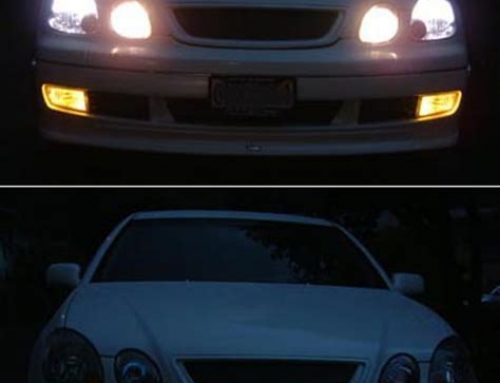Once in a while we hear a customer has had to spend a LOT of money on a repair to their car or truck.
Often, this can be avoided if you know how…
Don’t get stuck with a $2,500 or $4,000 (or similar) repair bill!
Below we give some general recommendations. Keep in mind that the first source is your vehicle’s owner’s manual. If the info in that manual contradicts with or supersedes anything we say below, go with what the owner’s manual says. These are just our recommendations.
We check and top off the coolant, windshield washer, power steering fluid and transmission fluid at every oil change. However, for a fluid flush or replacement, the following items are serviced not by InSite OilChange but by a mobile mechanic we can recommend or by any good repair shop.
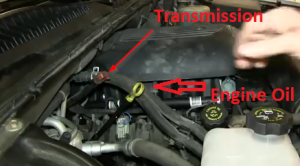
Transmission Fluid:
In the old days it was commonly said that the transmission fluid should be changed every 30,000 miles or so. Now, many people never change it at all. The experts we’ve consulted say the best thing to do is to have it professionally flushed every 30-50,000 miles. Do it every 30-35,000 miles or so under harsh conditions such as a lot of stop-and-go driving, in a work truck, an older vehicle, etc. Just draining it manually and refilling it only gets some of the fluid (maybe 65-75%) because you’re not getting what’s in the torque converter, transmission cooler and cooler plumbing. It needs to be power-flushed to get it all. However, read the NOTE below:
NOTE: One thing to keep in mind is that if a transmission has a lot of miles on it, maybe 75,000 or more, and has never been flushed, power-flushing can do harm as it will loosen up all kinds of things in the transmission. So it’s usually better in this case to just manually change the fluid, even though you’re not getting all of it. You could do it a second time, say 5,000 miles after the first time, to get most of the fluid changed.
Your vehicle’s oil and transmission dipsticks should look something like the ones in the photo ABOVE. Check the level when the transmission is hot (has been running), with the engine running and the trans. in Park. If the fluid level is low, add the type your vehicle’s Owner’s Manual recommends (you can also ask an auto parts store about what type to use). Some newer vehicles do not have a trans. dipstick.
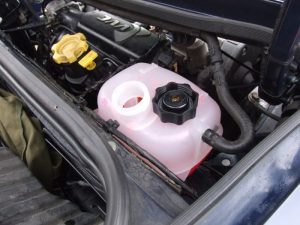
Coolant / Anti-freeze:
Modern coolants are designed to go a long time without losing their capabilities. However, it gradually will get contaminated with dirt and dust, and possibly from stuff in the water it’s mixed with, since it’s supposed to be mixed 50/50 with water. Mixing it with distilled water helps and is highly recommended. Even if testing shows the cooling and antifreeze protection are still adequate, antifreeze can become more acidic over time and lose its rust-inhibiting properties, causing corrosion. Corrosion can damage the radiator, water pump, thermostat and other parts of the cooling system, so the coolant in a vehicle with more than 75,000 miles should be tested periodically. A good way to schedule this might be to have it tested, and flushed if necessary, the first time after 50,000 miles that the transmission and/or differential are flushed and then tested again at every transmission flush.
Your vehicle’s coolant overflow reservoir should look something like the one in the photo ABOVE. Check your Owner’s Manual for the right type of fluid. If the fluid level is low, add the type your vehicle’s Owner’s Manual recommends (you can also ask an auto parts store about what type to use).
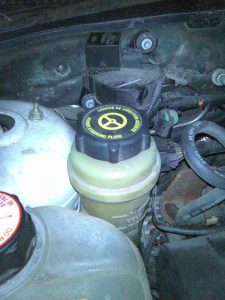
Power Steering Fluid and Brake Fluid:
As far as we know, most vehicle owner manuals no longer say anything about changing these fluids. Lube shop chains are known for pushing fluid change services but apparently, much of the time that’s just so they can make money. Topping off these fluids when necessary is important. But they can often go the life of the vehicle unless they become contaminated. Contamination can occur if there’s a leak in the system or if the vehicle has gone a very long time, say at least 125,000-150,000 miles. A white-ish power steering fluid means there’s water in the fluid, which is bad. Dirty brownish fluids are probably no longer doing their job very well, either.
If your vehicle was made in the last couple of years it may not have a power steering fluid reservoir, as vehicle manufacturers are transitioning to a type of electric power steering. If it does have P.S. fluid, the reservoir should look something like the one in the photo ABOVE. If the fluid level is low, add the type your vehicle’s Owner’s Manual recommends (you can also ask an auto parts store about what type to use).
Differential Fluid:
This is essentially similar to engine oil – it’s doing pretty much the same job, i.e. lubricating moving parts. But it has to handle a lot less stress (less heat, pressure, dirt getting in, etc.) than the engine oil. Unless you are racing, pulling a heavy trailer a lot, or have a 4-wheel-drive truck that’s doing serious off-roading, the differential oil can probably go at least 75,000 miles and maybe more before being changed. Most people never have it changed, and few of them ever have a differential problem. However, just as motor oil does, the differential oil will break down over time. Also, tiny metal particles will get into it from the gears it’s lubricating. So we recommend changing the differential oil every 100,000 miles.
Motor Oil:
The 3,000 mile interval is no longer necessary because of improvements in lubrication and in the engineering and manufacturing of engines. However, the modern trend towards 7,500 or even longer intervals is cause for concern for three reasons:
- A company we’ve worked with has a fleet of pick-ups and vans. The business owner insists on using Amsoil, which is an expensive, full synthetic oil. Amsoil claims their oil can go 15,000 miles or more between changes, so the fleet owner sent Amsoil samples of the oil from two trucks after the oil had gone 10,000 miles, and asked them to test it. Amsoil’s response, after testing the oil, was that the oil should be changed every 5,000 miles. One major reason for this is that the fine dust here in the Southwest gets into engines a little at a time. Oil molecules do many things, but one is that they encapsulate dust and metal particles to protect the engine. No matter if the oil is cheap conventional or expensive synthetic, it has only so many molecules before it has encapsulated as much as it can. Then it needs to be changed.
- As an engine gets older, slight “blow-by” increases. This doesn’t happen as soon as it did in the past, because engine manufacturing has gotten better, but it still happens. The rings and valves are not as tight as when new, so a little bit of unburned fuel gets into the crankcase, and this dilutes the oil, causing the oil to break down sooner. If the oil isn’t changed often enough, you can end up with slightly accelerated wear in your engine.
- Sludge can build up from old oil, dust and dirt, etc., inside the engine. This will plug oil passages and will also interfere with moving parts in the engine. We have photos showing what a huge difference it makes to change the oil every 5,000 miles vs. going 10,000 or more miles.
So we recommend changing the oil every 5,000 miles if you’re using conventional oil, and AT LEAST every 7,500 miles with full synthetic oil (5,000-6,000 is better).
The photos BELOW show typical oil dipsticks. Yours should be similar. The photo on the right shows the bottom end of a dipstick – the left (bottom) hole has an “L” next to it, for “Low”, and the right or upper hole says “F” for “Full”. Some oil dipsticks may have “Min.” and “Max.” or they may have two notches for minimum and maximum. If the oil level is low, add the type your vehicle’s Owner’s Manual recommends (you can also ask an auto parts store about what type to use). Usually, the distance between the low hole or notch and the top one represents 1 quart of oil, but check you Owner’s Manual to be sure.
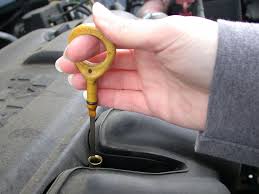
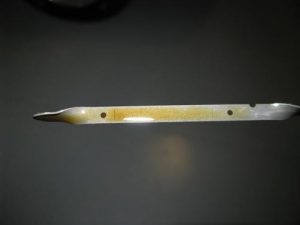
Other:
Air filters should be changed when necessary, and that depends on the ambient conditions. They usually last anywhere from 25,000 to 35,000 miles or so.
Fuel filters might never need to be changed on a gasoline engine since gasoline contains detergents which help keep filters, lines and injectors clean. It doesn’t hurt to add a fuel system cleaner every 10,000 miles or so; these cost a few dollars and are poured into the gas tank per the instructions on the fluid container.
Most modern vehicles no longer need chassis lubrication as they are lubricated at the factory with grease that lasts a very long time and are sealed. We check the lube points on vehicles that have them and add grease if needed – which is not very often.
Tune-ups usually need to be done according to the vehicle manufacturer’s schedule, which these days can be at anywhere from 100,000 to 125,000 miles for most light vehicles (check the owner’s manual).
SUMMARY:
Engine: Change oil and filter every 5,000 miles.
Transmission: Power flush every 30-50,000 miles depending on factors discussed above.
Coolant: Have tested, and changed if necessary, at 75,000 miles and test it about every 30-40,000 miles after that.
Power steering and brake fluids: Change only when necessary, as in if fluid is obviously contaminated, or at 150,000 miles.
Differential: Drain and fill every 100,000 miles.
Other: See above Summary under “Other”.

